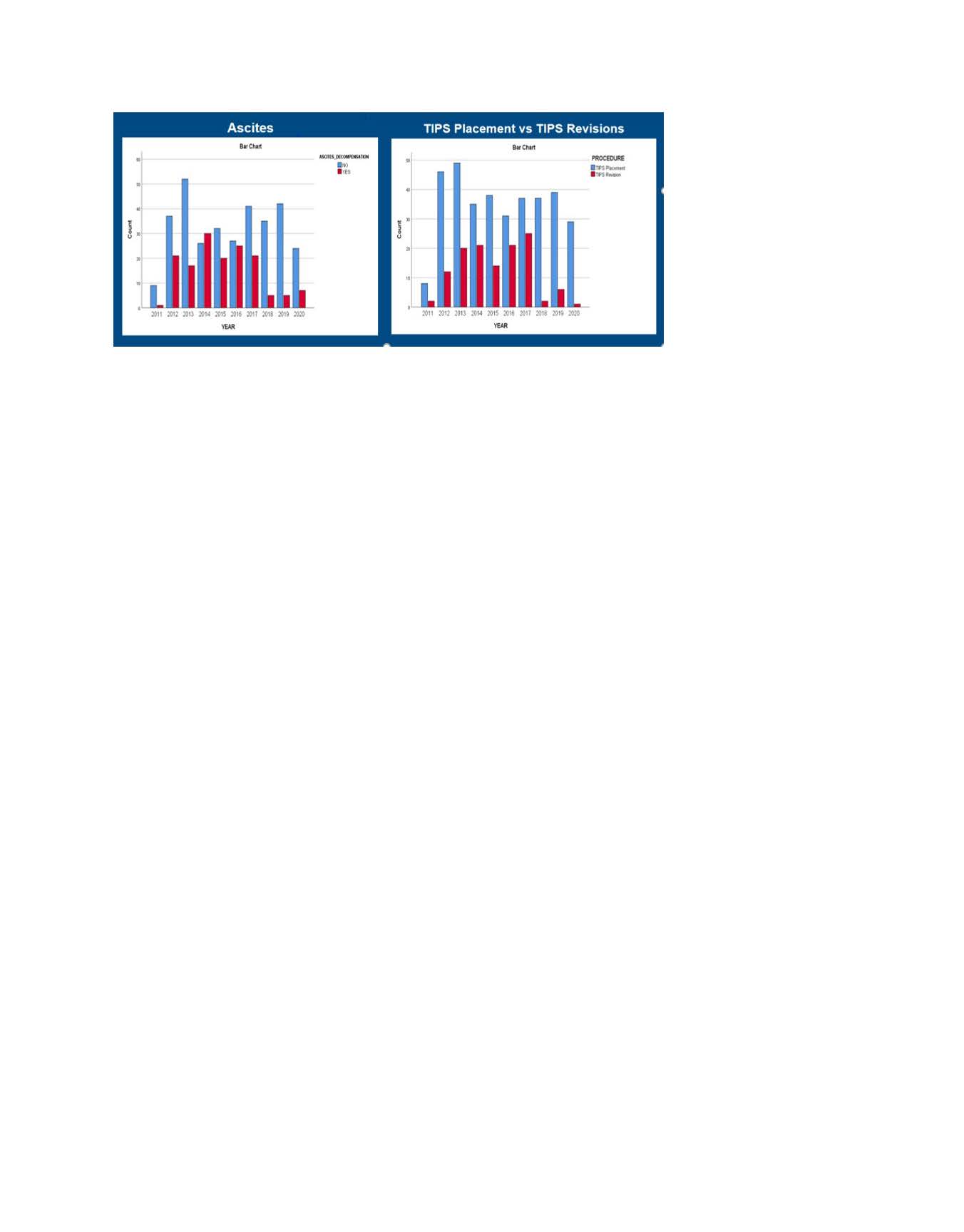Evolution of the Need for Transplant Evaluations for Liver Failure Decompensation After TIPS
1Transplant Hepatology, Tampa General Hospital, Tampa, FL, 2Lake Erie College of Osteopathic Medicine, Bradenton, FL, 3University of Tampa, Tampa, FL, 4Radiology, Tampa General Hospital, Tampa, FL, 5University of South Florida, Tampa, FL, 6Morsani College of Medicine, University of South Florida, Tampa, FL, 7Transplant Surgery, Tampa General Hospital, Tampa, FL
Meeting: 2022 American Transplant Congress
Abstract number: 870
Keywords: Liver failure, Liver transplantation, Survival
Topic: Clinical Science » Liver » 55 - Liver: Recipient Selection
Session Information
Session Time: 5:30pm-7:00pm
 Presentation Time: 5:30pm-7:00pm
Presentation Time: 5:30pm-7:00pm
Location: Hynes Halls C & D
*Purpose: Portal hypertension is described as an increased pressure gradient between the portal and systemic circulation which can result in severe complications. Transjugular Intrahepatic Portosystemic Shunt (TIPS) serves as the prevailing interventional radiology procedure to alleviate decompensation in liver failure patients. MELD scores less than 17 currently serve as the primary indication for successful TIPS placement. Transplant is recommended if prognosis worsens to liver failure after TIPS. The purpose of the study was to evaluate the evolution of TIPS at a single transplant center.
*Methods: We conducted a retrospective cohort study of adult patients (age>18 years) who received TIPS from 2011 to 2020. The extracted data included demographics, MELD scores, and complications. Each variable was analyzed for the descriptive annual trend.
*Results: TIPS patients were more likely to be male (55% to 78% yearly). There was little variation in the mean age of TIPS patients over the study period (53.6 to 58.7 years). TIPS patients were predominately White (75% to 96% annually). The mean MELD score at the time of TIPS placement ranged from 10 to 12. Complications included ascites within 30 days of the TIPS procedure that peaked at 30% in 2014, then trended downward to 14.3% in 2017, and subsequently 0.5% the next year. Over time, there was a steady decrease in the percentage of TIPS placements (80% down to 56%) compared to a rise in TIPS revisions (20% up to 44%). The rate of liver transplant post TIPS steadily decreased from 10% early on down to 5% at the end of the study period.
*Conclusions: The work-up protocol of TIPS indication has evolved over the last decade. The drastic decline in clinical decompensation attests to the advancements in TIPS technology and the standard of care in the clinical management of liver failure patients. TIPS remains a valid option as a bridge for the liver transplant patient with a low risk of clinical decompensation in carefully selected patients.
To cite this abstract in AMA style:
Kemmer N, Sureshkumar V, Grater L, Hoots G, Agrawal S, Robichaux K, Gosselin M, Mohammed S, Kumar A, Buggs J. Evolution of the Need for Transplant Evaluations for Liver Failure Decompensation After TIPS [abstract]. Am J Transplant. 2022; 22 (suppl 3). https://atcmeetingabstracts.com/abstract/evolution-of-the-need-for-transplant-evaluations-for-liver-failure-decompensation-after-tips/. Accessed July 3, 2025.« Back to 2022 American Transplant Congress

